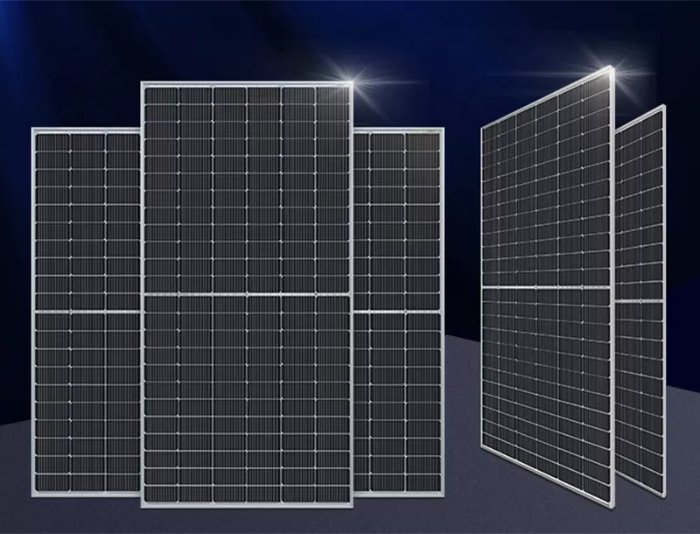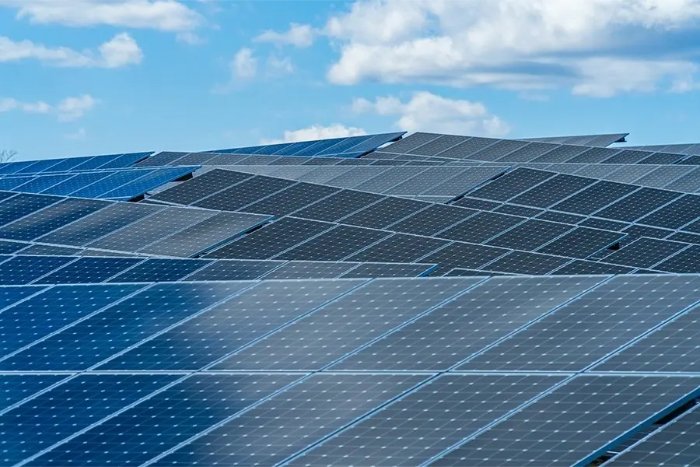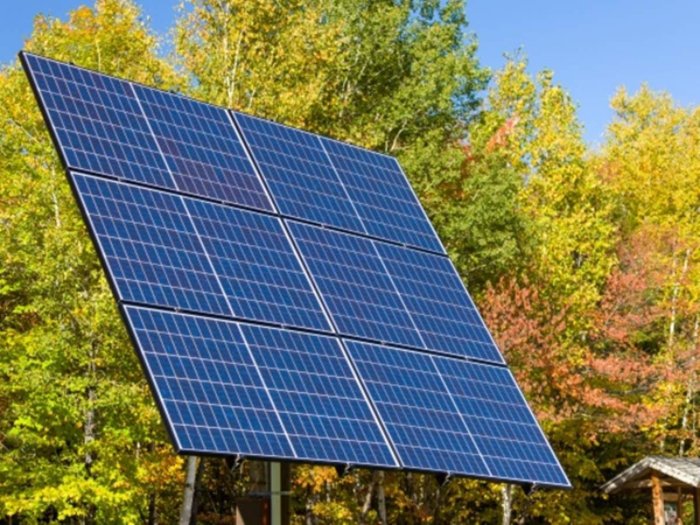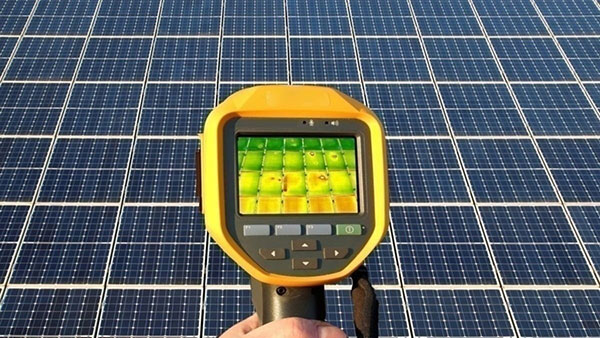High Efficiency
Monocrystalline solar panels enjoy a variety of advantages over their polycrystalline or thin-film alternatives, but one of the most notable ones is related to efficiency. The efficiency of these panels usually ranges from 15% to 20% . This property of monocrystalline solar panels is largely due to the use of high purity silicon. For example, when the homeowner’ has little space on the roof to install the photovoltaic system, the use of less efficient panels might easily result in the loss of potentially hundreds of kilowatt-hours of harvestable electricity.

Longevity
Another strength of monocrystalline solar panels is their longevity as, currently, the majority of makers of these units provide warranties of at least 25 years . This long lifespan is possible due to the fact that such panels consist of a single, solid crystal, which reduces the probability of any physical deterioration, such as cracking or other kinds of damage. Users in specific regions also report that these units lose virtually none of their efficiency after 25 years of heavy use .
Aesthetics
Another reason for choosing monocrystalline solar panels is their look, which is usually more appealing to the residents of the house. The black silicon cells combined with a black backing sheet make the individual cell hard or impossible to distinguish . This also increases the overall appeal of these units for applications where the effect of visual pollution caused by solar panels is most significant. For instance, many real estate agents note that homes with monocrystalline panels appear more attractive and thus sell for higher prices than otherwise similar establishments.
Environmental Effects
One more reason for selecting these solar panels is their contribution to a sustainable solution. Their efficiency makes it necessary to deploy fewer panels per kilowatt of generated electricity. As a result, they have a lower environmental load when it comes to the greenhouse gases released during the production, transportation, and installment of the panels. For example, a usual residential solar system results in a reduction of greenhouse gas emissions by several tons every year, which equals the effects of planting over a hundred trees every year .
Space Efficiency
Monocrystalline solar panels are ideal for locations with limited space but high energy demand. They produce more power per square foot compared to polycrystalline or thin-film panels. A monocrystalline solar panel with an efficiency rate of 20% can produce 3 kW of power by occupying only 150 square feet of a roof. As for other types of solar panels, at least 200 square feet or more is required to obtain the same output. Consequently, monocrystalline panels are the most space-efficient of all systems and are recommended for urban settings.

Municipal Setting
Monocrystalline panels are best suited for cities, townships, and other urban areas where roof space is usually limited . A comparison of two solar panel installations in the city is a good example of this advantage. Installation of monocrystalline panels produced 30% more power per roof area compared to other panel types in a densely populated city .
Utilization of the Entire Roof
For urban and private areas, monocrystalline solar panels are also beneficial because homeowners do not have to redesign their property and construct vacated space for large panels with less area efficiency. The panels can be spread throughout the roof so that even small sections can be appropriately covered and conditioned. As a result, up to half the roof can be fitted with monocrystalline solar panels, with smaller areas going unused.
Commercial Property
On the premises intended for business, the problem of also limited space is even more intensified. The use of monocrystalline panels, which produce higher energy output, enables companies to purchase fewer panels while still meeting their energy demand. One commercial site cut the physical size of a solar array by 25% while retaining power generation levels after upgrading from other types of solar panels to monocrystalline cells .
Conclusion
Monocrystalline solar panels provide the highest output of energy. They occupy only a fraction of the space compared to other systems, which is beneficial in urban settings or in areas with limited roof space.
Heat Resistance
Monocrystalline solar panels have excellent heat resistance compared to other technologies. They continue to operate at a high level during the extreme heat that hot climates tend to produce. This is the most significant advantage of the technology for those living in warm climates. High-quality silicon is used to build monocrystalline solar panels. This is the primary reason these panels are so heat-resistant. For example, many of these panels experience a performance decrease of about -0.3% per degree Celsius. This is lower than the temperature coefficient of performance experienced by many polycrystalline solar panels.
Solar Power Generates C onsistent Output T emperature Increases
Monocrystalline solar panels are ideal for use on heat waves. They generate an output that deviates minimally from their maximum performance. Ierfino, Telaretti, and Capasso wrote about their research on monocrystalline silicon solar panels in a desert environment . Their experiment began at 25°C . They found that the panels were generating as much as 90% of their maximum output when the outdoor temperature was 40° . This kind of resilience is essential in areas with hot climates. Most of these areas also have high cooling costs in the summer or all year round. The high temperatures in hot climates increase the demand for electricity. When the temperature is reaching 35°C , it can be useful to have a power source that will continue to operate efficiently.
Revisions to Solar Panels Extend Their Usability Throughout Hot Climate Environments
The silicon that makes the up the monocrystalline solar panels is more heat resistant than alternative technologies. Sometimes, it’s not the extreme heat itself that causes solar panels to wear out more quickly in hot climates. Instead, simple thermal cycling can cause the temperature of the silicon cells to change dramatically. This in turn reduces the panels’ lifespan. Monocrystalline panels resist thermal cycling more effectively and have a longer lifespan in hot climates. For example, solar power plants in climates as hot as Arizona have experienced less than 0.5% degradation in the energy production capacity of their panels each year, on average. This degradation rate is far lower than the diminishing efficiency rates to which the solar panel industry had become accustomed.
Low-Light Performance
Monocrystalline solar panels were created to function in less light, and they live up to this promise better than any other type of solar technology. Their ability to maintain higher efficiency levels even at low or indirect light is a testament to the superior material and design workings. Field studies and research show that monocrystalline panels exhibit an efficiency of up to 90% in conditions such as early mornings, late afternoons, and lower diffuse light due to geographical climate or weather conditions.
Superior in Cloudy Climates
The power production of some panels loses up to 25% of usage when attempting to produce under diffuse light. In places where the weather or climate is cloudy, such as the Pacific Northwest in the United States, monocrystalline solar panels are much more effective at maintaining the same significant power generation throughout the year . Consequently, they produce 25% more power than other types of solar technologies during most of these events, determined by fall and winter shorter days.
Shorter Sunlight Duration
Solar panel types weighing in on glass reflect more diffused light, which harmfully affects the service’s efficiency. Winter months’ service is due to lower sunlight that stays for a shorter period. A Scandinavian country study showed that monocrystalline installation production during winter was up to 10% more than polycrystalline type studies. It is safer to frequently apply the concept by saying that if diffused sunlight is the advantage, then monocrystalline is best for you, while if the sunlight is direct, polycrystalline can have service that is at par with the former version.
Effective at Dawn and Dusk
Monocrystalline solar panels are the best bet for usage during those times of the day when there is a lighter impact, such as dawn and dusk. The effect lasts for at least 30 minutes after or before the sun has set. A study of real-time service use in a weather station showed that monocrystalline solar panels are effective at production during the earlier times of daylight than glass reflect plates.



